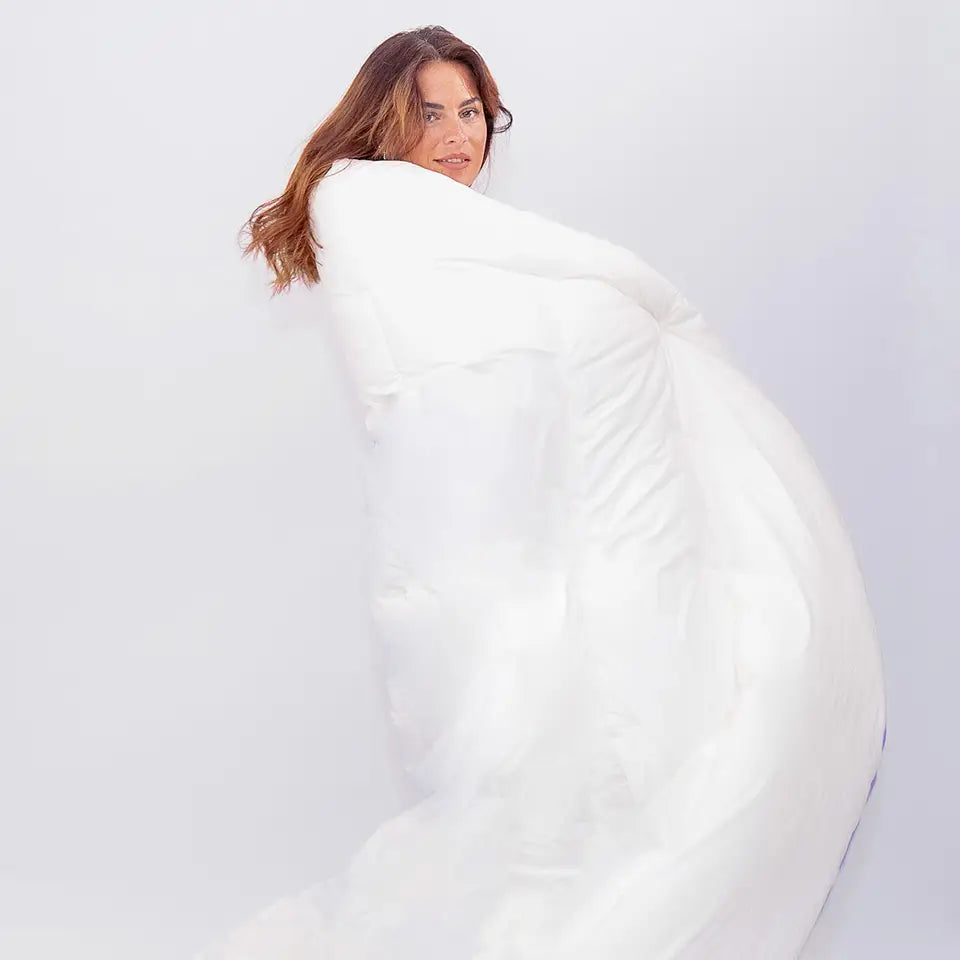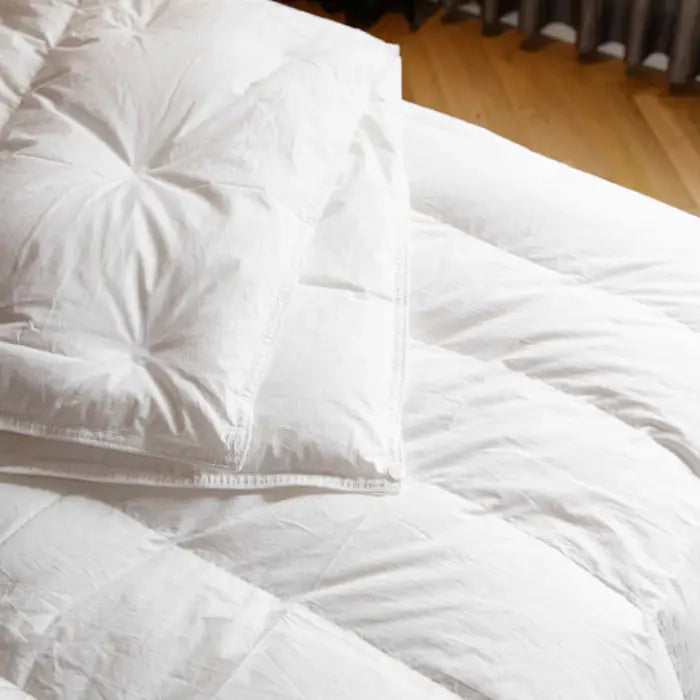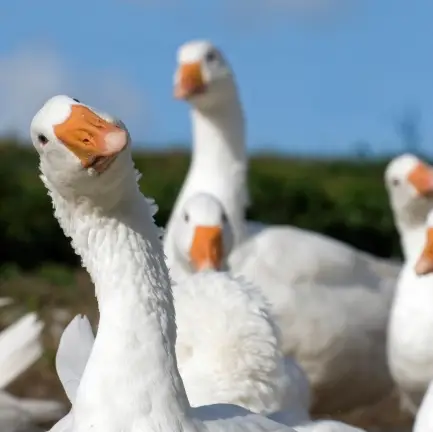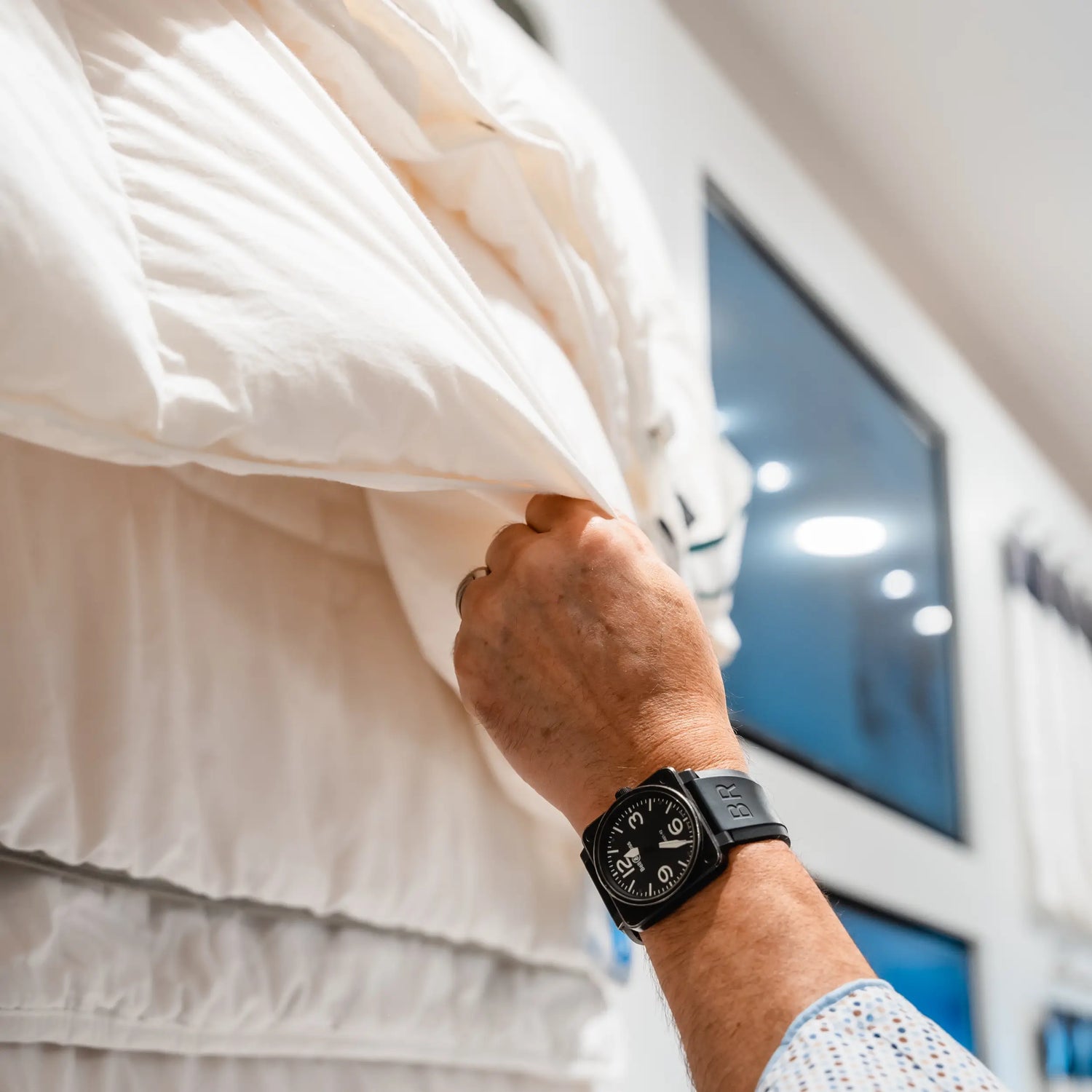What is a good duvet?
It might come as a surprise, but your duvet plays a significant role in your sleep quality. It contributes to a comfortable bed climate. A duvet should insulate and ventilate well. This way, you'll stay dry and neither too hot nor too cold. We prefer to use natural materials in our duvets, such as wool and silk, but if hygienic requirements dictate, we also use washable versions of natural or synthetic origin. We're also happy to provide personalized advice. When choosing the perfect duvet, we consider the following factors:
Personal metabolism (quickly warmed up or quickly cooled down)
Sweating a lot or a little
Comfort: Do you like sleeping under something heavy or light?
Washability
Duvets with natural fibers
A curly fiber like wool can absorb up to 40% of its own weight in moisture and still provide insulation even when damp. Wool varies in quality depending on the climate where the animal lives. For example, sheep's wool from colder climates produces better quality, and this is especially true for camel hair and cashmere goat wool. When you think of a wool duvet, don't think of the heavy, woven Sole Mio blankets of yesteryear.
Our duvets are made of the finest cotton on the outside but filled with airy wool on the inside! Other materials like linen or silk are chosen specifically for their cooling effect. Finally, there are materials made from natural resources like wood cellulose, which are processed into airy flocks for insulation. Here too, duvets are available in various thicknesses to suit your body and sleeping situation.
-

Sheep wool
A duvet filled with wool feels heavier on the body than down. Wool offers excellent ventilation and insulation. It's therefore suitable for people who sweat easily and get hot, as well as those who get cold easily. Wool can absorb and release up to 40% of its own weight in moisture. Be careful not to let the wool become saturated. Good ventilation during the day is essential. Some wool duvets are washable at 40°C.
-

Camel wool
Camel hair in your duvet feels slightly lighter than a wool duvet. A camel is exposed to highly variable temperatures in the desert: very hot during the day and very cold at night. Therefore, you need less of this material to achieve good ventilation and insulation. The hair is regularly shed by the animals and collected for processing. This duvet is not washable. Dry cleaning is recommended.
-

Cashmere wool
A duvet made with cashmere feels very light. It's one of the finest wools. Cashmere is made from the wool of mountain goats that live at high altitudes. People who prefer to sleep under down, but sweat more easily, are best off with this option. These animals also experience highly variable temperatures, which also provides excellent insulation and breathability. The wool of the cashmere goat is collected after shedding naturally or sheared, like sheep.
-

Wild silk
Wild silk comes from the silkworm. This filling is very light and has excellent ventilation properties, but its long, flat fibers offer little insulation. This makes it an ideal duvet for summer or for people who tend to overheat. Dry-clean at a specialized dry cleaner.
-

Cotton
A cotton duvet's main advantage is that it can be washed at higher temperatures: boil-wash up to 95°C and tumble-dry up to 120°C. It ventilates well, doesn't absorb as much moisture, and retains it more easily. It also insulates less effectively than wool. People who get cold easily are better off choosing a wool filling.
-

Tencel
Tencel is the brand name for a cellulose filling made from eucalyptus wood. The cellulose from the wood is processed into flakes, but not in an environmentally harmful way; instead, an organic solvent is used. The duvet feels light to sleep under. A major advantage of Tencel is that it is washable at 60°C.

Duvets
Down duvets often have very high insulating properties . High-quality duvets are also very light , so you feel nothing on them. A distinction is made between down weight and down content .
Down weight refers to the total weight of down in the duvet. The down content, on the other hand, indicates the quality of the down. The higher the down content, the better the quality. Imagine the plucked down being blown into a kind of filter system where the feathers are first retained, leaving only the finest particles at the end. Down content is therefore discussed as 30% (cf. Austrian "plume" duvets), 60%, 90%, 95%, and 100%.
The catch is that down duvets can be called 100% down from 90%. We don't do that. That last 10% isn't the cheapest way to achieve such pure down, but you get what you pay for. Specifically: a duvet with a 1000g fill weight and 90% down content will be considerably warmer than one with 1000g and 60% down.

The ticking of a down duvet
A percale-woven cotton cover is very tightly woven to prevent down from escaping. The cover is stitched differently for a summer duvet than for a winter duvet. To prevent heat loss at the seams, additional baffles are added to a winter duvet. For this reason, the cover of a summer down duvet is fully quilted.
Compartments are provided to prevent the down from shifting.
We opted for refillable squares in the down cover. There's a channel in the compartment that allows you to refill or clean your duvet later, as the compartment isn't completely sealed. Others prefer lengthwise sections, which require you to regularly shake the down to redistribute it.

The origin of down
The origin of the down significantly influences its quality. For example, down plucked from geese in colder regions is of better quality than that from warmer regions.
The goose down must also be sufficiently mature. Chinese-quality down is often not mature enough and loses its resilience, and therefore its insulating properties. We work with Belgian-made down duvets that are also refillable, refillable, cleanable, extendable, adjustable, and so on. The methods used to gather the down are still subject to animal welfare regulations. Our manufacturers are committed to using down from within the European Union, which has animal welfare legislation. The animals are plucked twice a year, only during the molting season when the down is completely loose and the animal experiences little discomfort. Russian and Chinese geese are plucked up to eight times a year.

Our advisors are trained to help you find the perfect duvet. We consider all the necessary factors to ensure you're 100% satisfied with your purchase. We offer the highest quality at an affordable price.
Our duvets
-
cashmere duvet (showroom model)
Regular price €300,00 EURRegular priceUnit price per€429,00 EURSale price €300,00 EURSale -
Thinsulate duvet (showroom model)
Regular price €175,00 EURRegular priceUnit price per€250,00 EURSale price €175,00 EURSale -
duvet camel hair warmth class 3 (showroom model)
Regular price €350,00 EURRegular priceUnit price per€499,00 EURSale price €350,00 EURSale -
duvet camel hair warmth class 2 (showroom model)
Regular price €230,00 EURRegular priceUnit price per€329,00 EURSale price €230,00 EURSale -
 Sold out
Sold outLysdrap bedtextiel toonzaal
Regular price €0,00 EURRegular priceUnit price per -
Duvet 100% Icelandic eiderdown
Regular price €0,00 EURRegular priceUnit price per -
Duvet 100% Pomeranian goose fleece
Regular price €0,00 EURRegular priceUnit price per -
Duvet 100% white pilzner gooseflaum
Regular price €0,00 EURRegular priceUnit price per -
Duvet 95% Polish White Goose Down
Regular price €0,00 EURRegular priceUnit price per -
Tencel African Cotton Duvet
Regular price €0,00 EURRegular priceUnit price per -
Alpaca Duvet
Regular price €0,00 EURRegular priceUnit price per -
Duvet Wild Silk
Regular price €0,00 EURRegular priceUnit price per -
Cashmere Duvet
Regular price €0,00 EURRegular priceUnit price per -
Camel Hair Duvet Luxury
Regular price €0,00 EURRegular priceUnit price per -
Merino wool duvet
Regular price €0,00 EURRegular priceUnit price per










